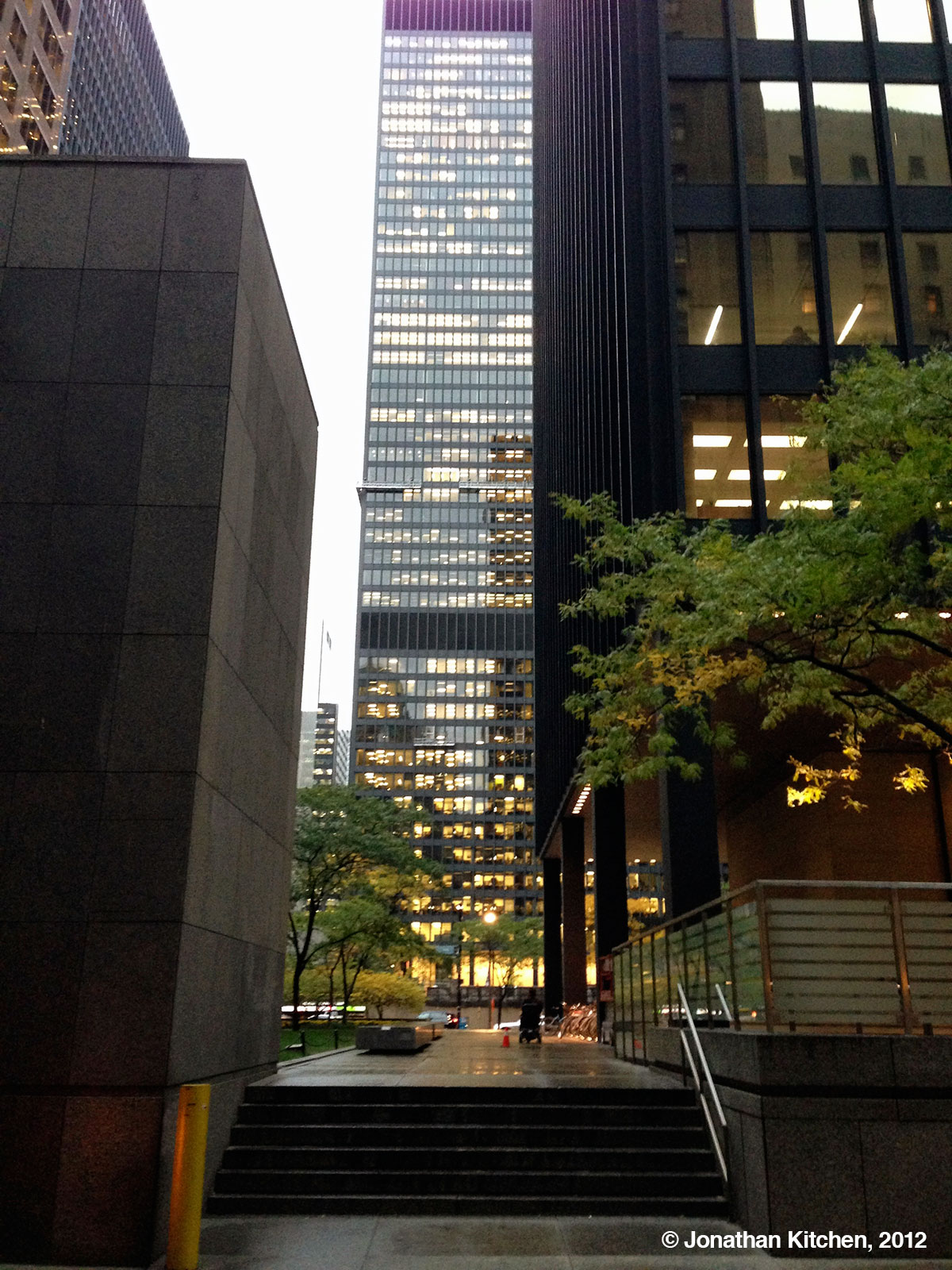
Figure 1. Toronto Dominion Centre plaza and buildings.
Over the past sixty years, Toronto's Central Business District (CBD) has become home to an ever-increasing densification of corporate office towers. Accessibility, control, power, and securitization of property has developed through the post-industrial evolution of the built environment, resulting in the exclusion of some individuals. This paper, through theoretical analysis and empirical data collection, argues that unequal access to privatized public spaces within the CBD's office towers, outdoor plazas, and the underground PATH system reinforces class distinction and capitalist hegemony. The qualitative empirical data used within this paper were collected through observational site visits of twelve corporate office towers and plazas in Toronto's CBD, as well as the PATH system. Through the analysis of these spaces, this paper concludes that the built environment of the CBD serves only the needs of the dominant capitalist and middle/upper-middle classes. The class distinctions and capitalist hegemony written into these built environments are reinforced through social, cultural, and physical controls of space. On a larger scale, the spatial exclusion of marginalized individuals within the urban environment speaks to a greater social and spatial inequality within the city, suggesting the need to re-evaluate systems of social, economic, and political power.
The Central Business District (CBD) in downtown Toronto (see Appendix) is one of the oldest areas in the city and yet has had some of the most dramatic changes. It was first developed in 1797 as a residential zone, but by 1850 manufacturing industries had taken over and displaced many of the homes. Almost one hundred years later, the area once again was redeveloped, but this time around large office complexes that displaced the industrial buildings (Gad, 1991). Beginning in 1967 with the Toronto Dominion Towers (Figure 1), the city witnessed its first international-style skyscrapers. In less than a decade, twenty-five more towers were erected within the CBD, and since then, skyscrapers have become an expected and desired sight in the downtown core (Bélanger, 2007). However, with office tower expansions came building densification in the CBD, resulting in a loss of public spaces.
The following discussion of the CBD will analyse three privatized spaces—the corporate office towers, plazas, and the PATH system—through themes of power, control, security, and accessibility. Methodologically, the qualitative empirical data were collected through observational site visits of twelve corporate offices and plazas1 in the CBD, as well as the PATH system. Through research data and theoretical analysis this paper will argue that the built environment of Toronto's CBD reinforces class distinction and capitalist hegemony through unequal access to privatized public space.

Figure 1. Toronto Dominion Centre plaza and buildings.
While each of the individual office towers in the CBD may have unique aesthetic qualities, their overall appearance is quite standardized: they are all made of similar materials—glass, steel, concrete, or stone—and are of considerable height, producing an imposing sight on the urban landscape. As a feat of technology, the towers are a source of prestige for the architects, the city, and its politicians, and are landmarks on the urban skyline. While formidable in size, the commanding presence of the buildings on the landscape reinforces their power over the city. Skyscrapers' imposing size and minimalist design portray images of efficiency, power, strength, and representations of wealth while remaining architecturally modern, both appealing to city planners and corporate institutions housed within them (Goss, 1988; Dovey, 1992; Huriot, 2012).
The design of the office tower is a clear expression of the political and economic dominance of its occupants. Lefebvre (1976) states that the symbols associated with corporate office towers represent "places of official Power, the places where Power is concentrated, where it reflects itself, looks down from above—and is transparent. The Phallic unites with the political, verticality symbolizes Power" (p. 88). The 26-storey Royal Bank Plaza (Figure 2) in the CBD is an example of Lefebvre's concentration of power. The financial institution has an exterior of reflective opaque glass with a sunken façade and an entrance encircled by columns. The size and architectural design of this building provides an image of the financial institution as almost an impenetrable fortress. According to Goss (1988), a building's aesthetics and expensive land value ultimately ascribes a commodification of space, and reinforces a distinction about what these buildings have been built for and who is meant to have access to them.2 While the exteriors of the buildings exude power and strength, the interiors are highly political spaces of hierarchical control, both of labour production and social discourse (Goss, 1988).
A common theme with the office towers are large expansive windows at the street level, sometimes the full front of the building, showcasing lobbies containing substantial pieces of artwork, decorative chandeliers, polished marble walls, and/or floor-to-ceiling columns (Figure 3). Like the buildings themselves, the lobbies are awesome in size and grandeur, and are meant to remind visitors of the power and prestige of the corporations above. The symbolism embedded in the spaces through their sheer size (oftentimes taking up two to three storeys and the entire street frontage), sterility, and glamour is a spatial separation between the inhabitants of the building and the street (Dovey, 1992).
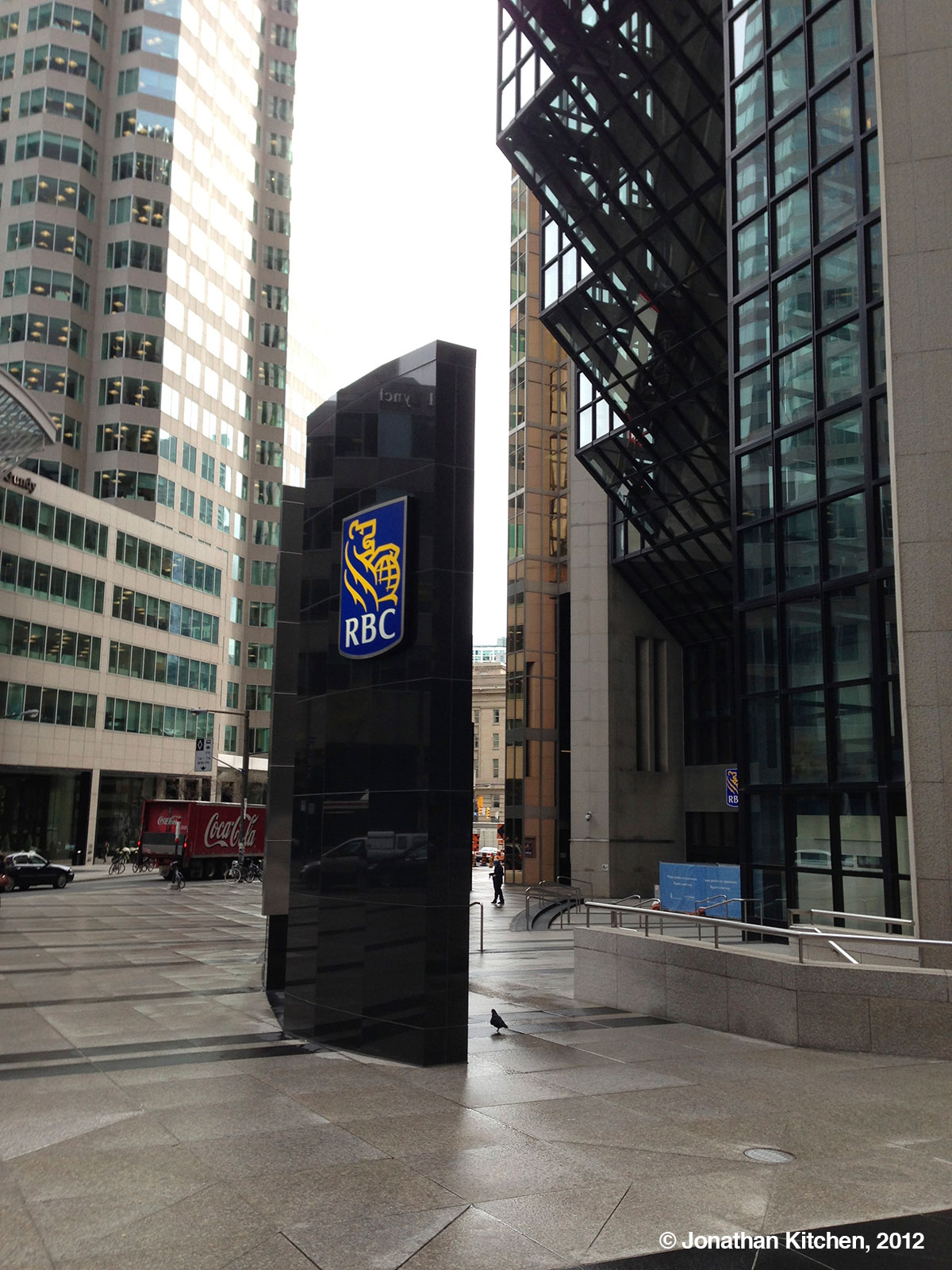
Figure 2. Columns surround the main entrance to Royal Bank Plaza, North Tower.
Each of the office towers employs visible securitization tactics in an effort to distance the corporations from the public street level and to reinforce to visitors their power and control. For instance, for an individual to access the elevators in the lobby on any of the sites, they must first walk past a concierge desk where either one or two uniformed security guards are stationed (Figure 3). This sequence suggests that the building management is actively making the visitors and workers visibly aware of security personnel. Thus, while the symbolism and ideology of the height of the building is of success and power, the security presence suggests a perception of negativity and disorder associated with the street level, preventing access for some of the individuals found within it (Huriot, 2012).
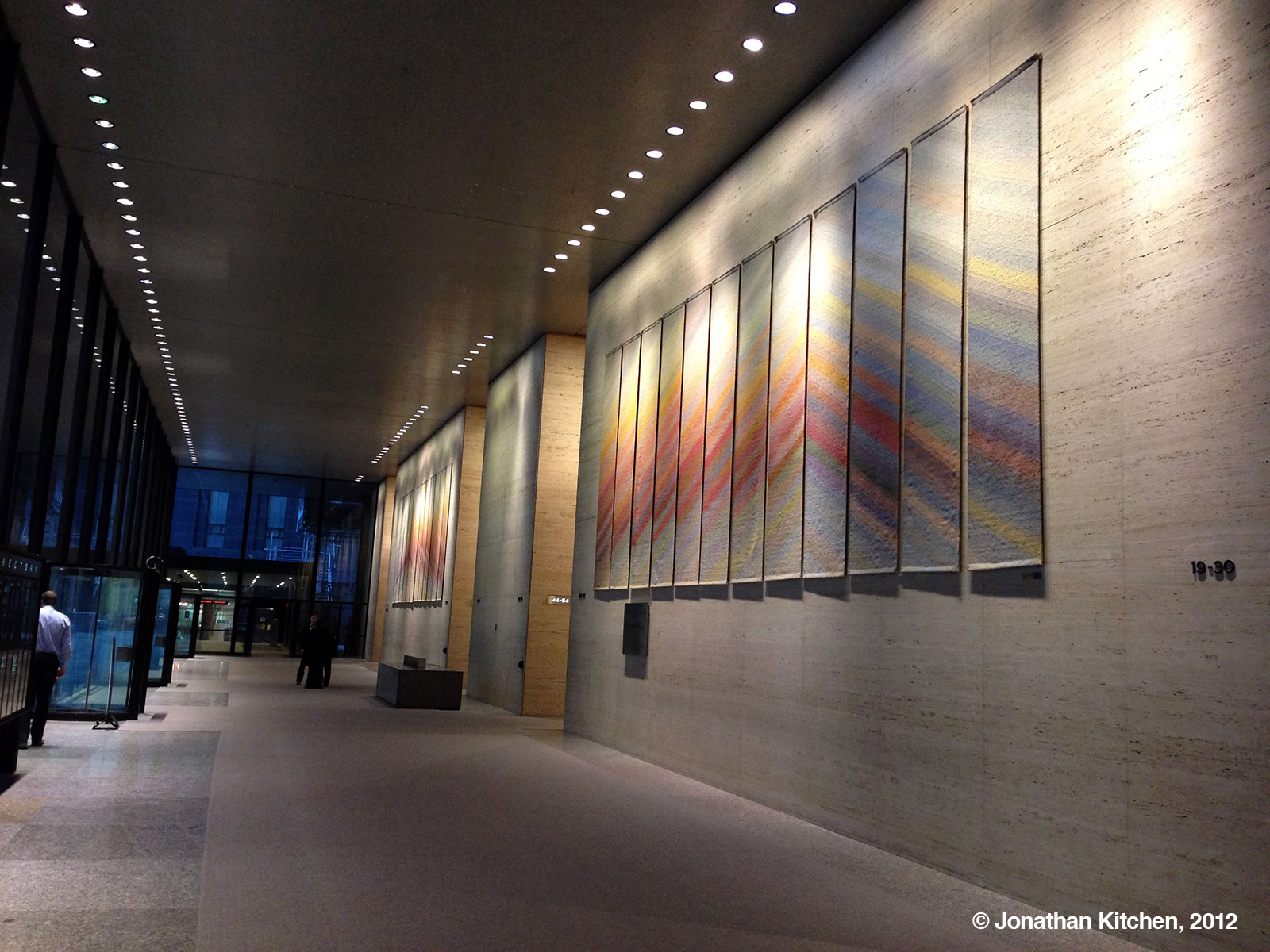
Figure 3. Toronto Dominion Centre lobby, with main entrance on the left and a security station before two central hallways to the elevators.
Security guard stations act as a physical barrier, filtering access and reinforcing specific codes of conduct to be adhered to within the space. According to Byers (1998), the key to "maintaining the success of a property is for building managers to ensure the perception of safety, even if that means standing by while the perception is cultivated that the outside world, on the streets, is unsafe" (p. 199). During my visits to Scotia Plaza (Figure 4), Toronto Dominion Centre, and Bay-Adelaide Centre, security guards were roaming the lobby as well as the grounds around the exterior, monitoring the individuals coming in and out and their activities. Their patrolling, in addition to the architectural design elements, reinforces the perception of the building as a fortified and safe environment. This is not a new concept as protective town walls, gates, and guard stations have been used as visibly effective symbols of defensible space for centuries (Nissen, 2008).
The exterior plazas surrounding the properties of these office towers, while seemingly public, are reflective of the same limited accessibility as the interiors of the office towers themselves. The aesthetics of the plazas suggest a significant order and functionality through design and landscaping, separating the spaces from the streetscape through the use of stone walkways, foliage, sculptures, large planters (Figure 4), and/or walls. Four of the properties—Brookfield Place (Figure 5), Commerce Court (Figure 6), Scotia Plaza, and First Canadian Place—even display signage that dictates the rules and regulations of the plaza space.
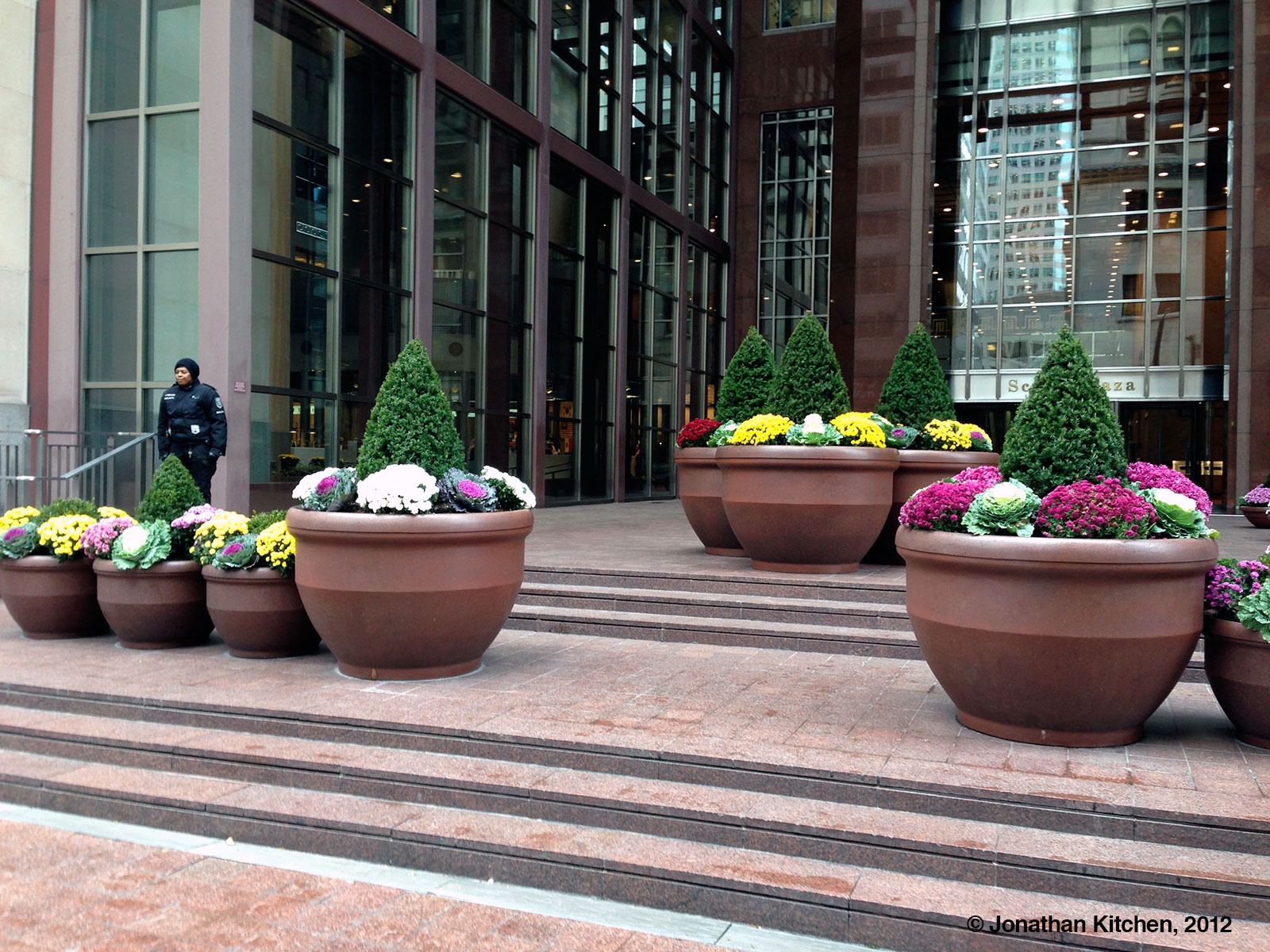
Figure 4. Security guard standing at the entrance to Scotia Plaza. Large planters divide the street from the building entrance.
This form of privatized and ordered environment, while accessible to the "public," is the modern capitalized form of public space within the CBD (Loukaitou-Sideris, 1993). The introversion of many of these "public" spaces, which are oftentimes enclosed in the property of the office complex, prevent usage by the actual public through architectural measures and inaccessibility from the street—such as the Toronto Dominion Centre plaza, which is encircled by buildings and raised up from street level (Figure 7). This effectively allows for the regulating of use to only the legitimized few that work in the office complexes and wish to escape from the city (Loukaitou-Sideris, 1993). The commodification of this space for elite and corporate consumption can truly be called, as Wagner (1993) so appropriately states, the "front gardens to the strongholds of capitalism" (p. 298).3 The design of these spaces—with stylish architecture, manicured and landscaped gardens, and ornamental materials—is meant to reinforce orderliness, not spontaneity, and to be consumed by and to "promote cues consistent with the goals of private enterprise" (Loukaitou-Sideris, 1993, p. 153). Through domination by the towers and the closed-off nature of the plazas, they are, in effect, isolated to the world outside, and, with the use of private security firms that police the interior and exterior property, they are able to maintain this division.
The PATH system began near the turn of the twentieth century with tunnels built at both the Eaton's department store and Union Station, but became popularized during the 1950s and 1960s with the completion of the subway system downtown (Bélanger, 2007). While the main reason for its development was to separate pedestrians and traffic at street level (Byers, 1998), its expansion throughout the CBD was primarily due to a loophole in city zoning (Bélanger, 2007). According to the zoning regulations of the time, when building the new office towers, any space that was below-grade was not included in the height limitations set by the city bylaws, and developers were able to capitalize on this by creating a subterranean retail system in an otherwise unusable and/or undesirable area. By utilizing space belowground, developers were able to free up the street-level for impressive and expansive lobbies (Bélanger, 2007).
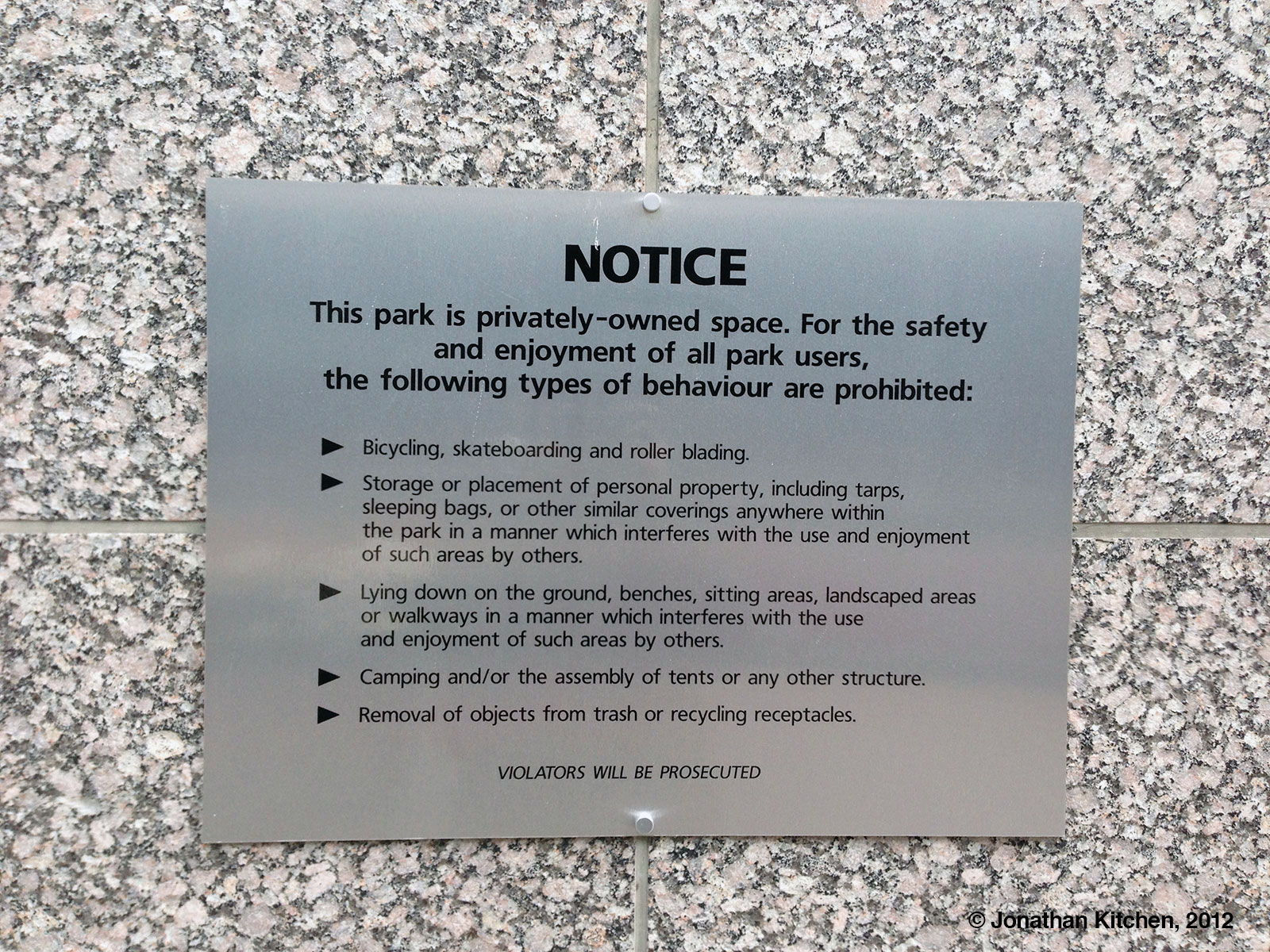
Figure 5. Posted "rules of use" signage in the plaza at Brookfield Place.
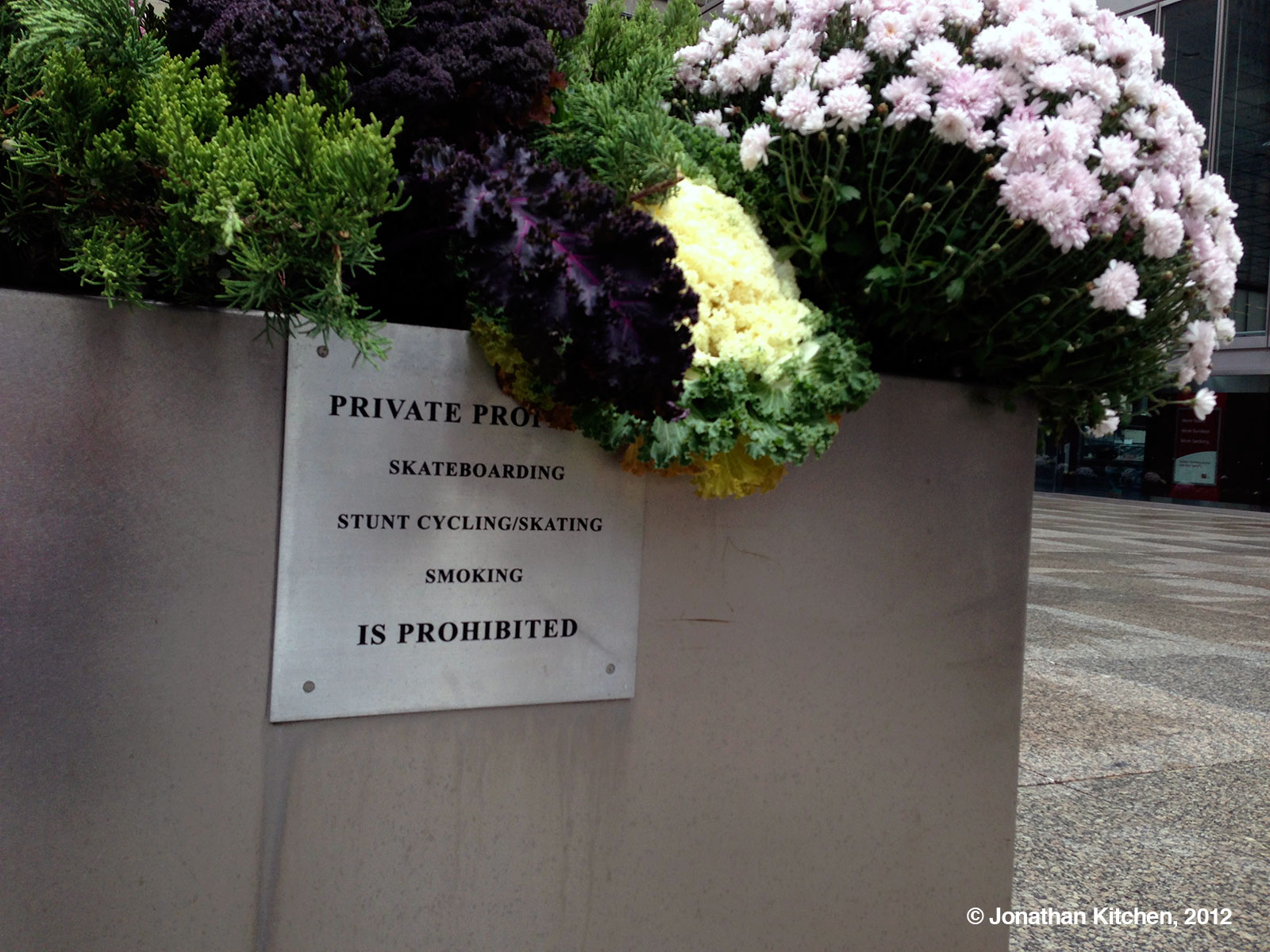
Figure 6. Private property signage in front of Commerce Court, North Tower.
The PATH is a privatized public space six city blocks wide by ten city blocks long, spanning three kilometres from end to end and connecting over fifty office towers (Byers, 1998). While walking through the maze of paths in the underground, it becomes evident that the affluence of the corporate offices above is translated into the PATH system below. This is apparent through the use of polished marble or granite on the floors and walls, architectural fixtures of brass and polished metals, and high-end stores lining the hallways (Figure 8). As with the lobbies and plazas, there is a very visible presence of security staff patrolling the privately regulated system.
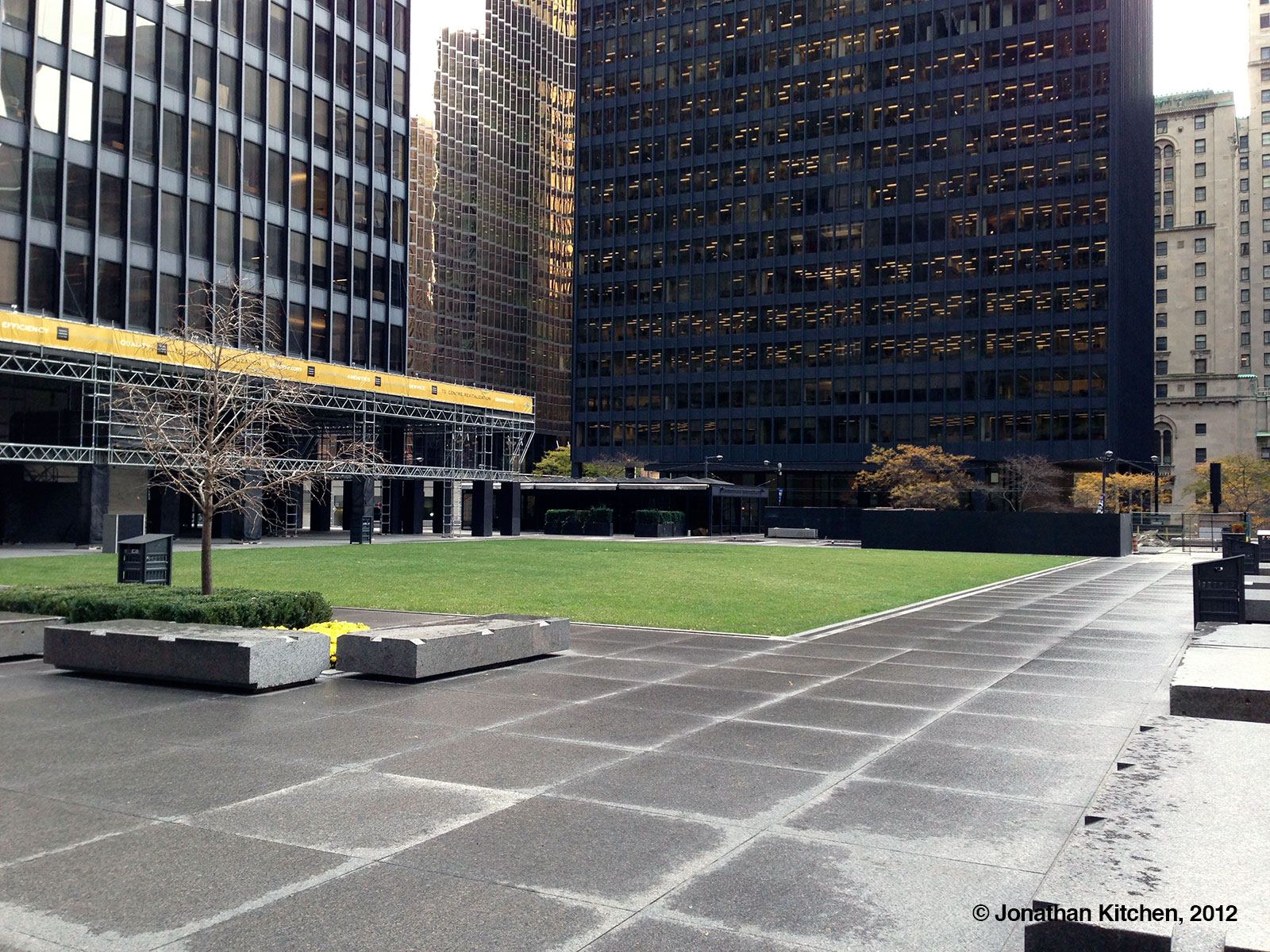
Figure 7. Toronto Dominion Centre Plaza. Buildings surround a grassed area with trees, foliage, and benches (with notches in them to prevent skateboarders from using them).
The PATH system services over 100,000 individuals during the average workday (City of Toronto, n.d.), yet the retail spaces and conveniences offered in the system only cater to a very select group of people: white-collar business professionals. The system is designed and operated to create a comfortable environment for consumers, and, through subtle controls of the space, are able to limit its use to only a select demographic of individuals (Byers, 1998). The very distinct separation of the PATH system from the street level helps to maintain a professional-class and consumer homogeneity while excluding diversity from the street. Jones (1993) sums up the highly specialized PATH system as,
A place devoid of children and young families, the elderly, the lower income segments of our society and the underclass. In large part, the underground is a retailing subsystem that is directly linked to the corporate city of enterprise. It serves the residents of the white-collar city of privilege. (p. 17)
Thus, this pseudo-public space provides the retail consumers and the office workers a controlled, ordered, and "safe" environment, which cannot be guaranteed in the "disordered" public streetscape (Byers, 1998). This separated system reinforces the distinctions of the social environment and the differentiation between the pedestrian classes, providing individuals with the ability to enjoy the city without the fear of the unknown, as the "undesirable" element is actively discouraged from entering through architectural and securitized measures (Byers, 1998).
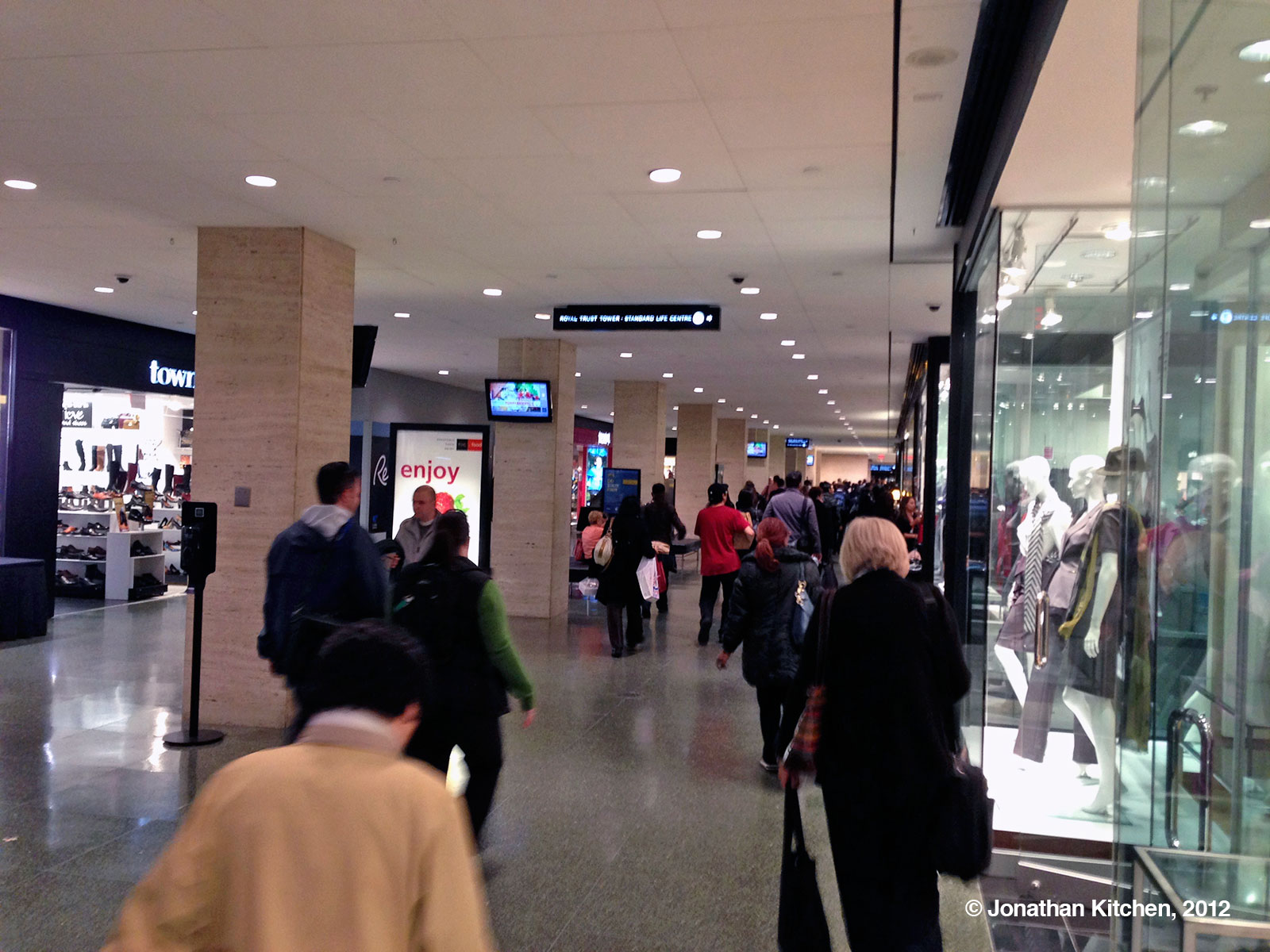
Figure 8. The retail stores of Toronto’s underground PATH system.
The dominant demographic of individuals observed at each of the sites was composed of middle-aged men and women in business attire, while missing from these sites were children, young adults, and the elderly. The lack of diversity within the CBD and the privatized public spaces is not by accident, but has instead been systematically reinforced through social and spatial factors. The corporate offices in the CBD employ social classification through subtle and not-so-subtle means. While they use very visible security measures such as the patrolling guards at Scotia Plaza and the outdoor signage outlining the regulations of use in the privatized plaza at Brookfield Place, their more subtle architectural design elements, such as the posts lining the street in front of the offices at First Canadian Place (Figure 9) and the high-end retail establishments in the PATH system, promote a social stratification and codification of acceptable classes of individuals.
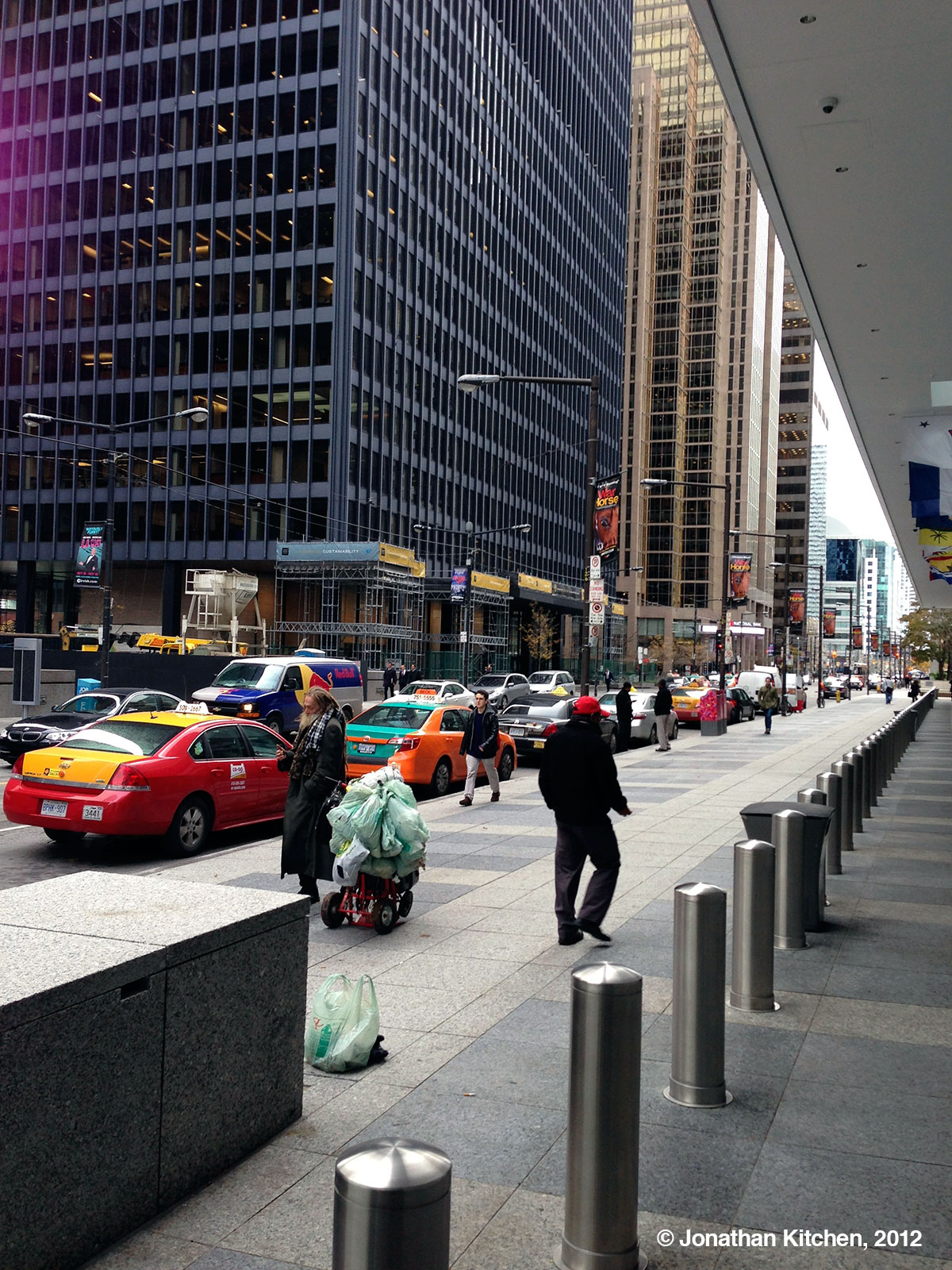
Figure 9. A homeless individual stands in front of First Canadian Place. Posts provide a physical line differentiating between the public street and private property.
Accessibility to these spaces depends more and more on the individual's ability to assume the role of a middle- or upper-class consumer and fall within the narrow parameters set up by the capitalist few (Nissen, 2008). Peterson (2006) so aptly recognizes that the built environment is not created in a vacuum, but instead is,
often designed to produce and support particular forms of public and private, provid[ing] the terrain on which concerns of access, security, surveillance and use are played out. Laws that authorize privatized public space and exclusions intended by "defensible space" are necessarily enacted by people. These controls become a means of constituting a public through relative inclusions and exclusions and … [from this] social groups and stratifications are produced. (pp. 377-378) (italics added for emphasis)
By removing the marginalized from view, the orderliness and "bourgeois cleanliness" of the CBD remains intact (Amster, 2003, p. 197). The standards with which undesirable elements—such as homeless, urban poor, panhandlers, elderly, or children—are excluded from the privatized public spaces is enforced and determined by those with power solely for the advantage of their own interests (Amster, 2003). Through "spatial and cultural cleansing," the CBD's powerful executives and building developers are able to stifle identities that are not in accord with capitalist perspectives on economic growth and prosperity (Amster, 2003, p. 199). For instance, while four homeless individuals were observed, all were on the street and not in or on any of the privatized public spaces (Figure 9). Their lack of visibility is a way of ensuring that they not threaten the validity of meaning with which the capitalist and privileged social classes interpret their lives (Mair, 1986; Amster, 2003; Mitchell, 1995).
According to Allahar & Côté (1998), "the state of capitalist society has two principal responsibilities: first, to ensure the long-term reproduction of capitalism and capitalist institutions and, second, to protect the interests of the various fractions of the capitalist class" (p. 41). Thus, to protect the economic prosperity of the CBD, the privatized public spaces are legitimized only for capitalist endeavours of a white-collar, homogenous, "consenting, invisible, and harmonious" public (Peterson, 2006, p. 359). This exclusionary system is reinforced through political and social systems that promote a normative and limited representation of "public," and is idealized through social discourse as desirable and preferable (Mitchell, 1995). Through the design elements of the built environment, and by employing regulations that are inherently exclusionary, executives of the capitalist class are able to filter out all but those whom they deem as the desired public.
The CBD's built environment has been systematically constructed to serve the needs of the dominant capitalist and middle/upper-middle classes at the exclusion of others. The class distinctions and capitalist hegemony are embedded in the built environment of the CBD and are enforced through social, cultural, and physical controls. This paper has argued that 1) the architecture of the office towers of the CBD symbolizes institutions of power held by corporations; 2) the plazas, lobbies, and street-level security act as buffers preventing access of the "undesirables" to the elite capitalist classes; and 3) the PATH system promotes a limited and idealized form of consumerism and bourgeois functionality. Accordingly, societal ideologies of power and social relationships with space are complex and deeply interrelated, ultimately constructing and reproducing unequal forms of privilege.
While this paper has attempted to examine the relationship between built form and social structures, it is limited by its focus on the CBD alone. The social forces behind the large office complexes in the downtown core and their exclusivity to the capitalist and middle and upper classes speak to a larger issue of social polarization within Toronto. With that in mind, this situation cannot be examined in isolation from the rest of the city, but instead must be examined as part of a larger urban, regional, national, and global system of social, economic, and political power. For further research, the framework applied to the CBD could be expanded to include other areas of the city to examine socio-spatial and socio-economic disparities, such as suburban sprawl, neighbourhood gentrification, and in-between cities. In addition, while gathering empirical data in the CBD, it became apparent in early observations that there was a racial divide between the white-collar business professionals and the service-sector employees. This unequal representation of racial diversity, while not discussed in this paper, also requires further examination and research.
Residents and users of the city must recognize that the built environment that surrounds them is socially and physically constructed by the privileged few that have the means to manipulate the city into something that represents their vision of inclusivity, efficiency, and beauty. The very fact that the alternative identities of the marginalized are a threat to the capitalist few suggests that the excluded masses hold a power that makes the bourgeoisie nervous. Within this power lies the possibility for these individuals to make a claim on the built environment and spatially secure a place for themselves within the city.
Allahar, A., & Côté, J. (1998). Richer and poorer: The structure of inequality in Canada. Toronto: Lorimer.
Amster, R. (2003). Patterns of exclusion: Sanitizing space, criminalizing homelessness. Social Justice, 30(1), 195-221.
Bélanger, P. (2007). Underground landscape: The urbanism & infrastructure of Toronto's downtown pedestrian network. In D. Kaliampakos & A. Benardos (Eds.), 11th ACUUS conference: "Underground space: Expanding the frontiers," September 10-13 2007 (pp. 329-336). Athens: NTU Athens Press.
Byers, J. (1998). The privatization of downtown public space: The emerging grade-separated city in North America. Journal of Planning Education and Research, 17, 189-205.
City of Toronto. (n.d.). Toronto. Retrieved from Path Facts: http://www.toronto.ca/path/
Dovey, K. (1992). Corporate towers and symbolic capital. Environment and Planning B: Planning and Design, 19, 173-188.
Gad, G. (1991). Toronto's Financial District. The Canadian Geographer / Le Géograph Canadien, 35(2), 203-207.
Goss, J. (1988). The built environment and social theory: Towards an architectural geography. The Professional Geographer, 40(4), 392-403.
Huriot, J.-M. (2012, January 25). Towers of Power. Retrieved from Metropolitics: http://www.metropolitiques.eu/Towers-of-Power.html
Jones, K. (1998). Retail dynamics in the Toronto underground system, 1993-1997. Toronto: Centre for the Study of Commercial Activity, Ryerson University.
Lefebvre, H. (1976). The survival of capitalism. London: Allison and Busby.
Loukaitou-Sideris, A. (1993). Privatisation of public open space: The Los Angeles experience. The Town Planning Review, 64(2), 139-167.
Mair, A. (1986). The homeless and the post-industrial city. Political Geography Quarterly, 5, 351-368.
Mitchell, D. (1995). The end of public space? People's Park, definitions of the public, and democracy. Annals of the Association of American Geographers, 85(1), 108-133.
Nissen, S. (2008). Urban transformation from public and private space to spaces of hybrid character. Czech Sociological Review, 44(6), 1129-1149.
Peterson, M. (2006). Patrolling the plaza: Privatized public space and the neoliberal state in downtown Los Angeles. Urban Anthropology and Studies of Cultural Systems and World Economics, 35(4), 355-386.
Wagner, M. (1993). Privatisierung von Kunst und Natur im öffentlichen Raum. Die Plazas von Manhatta. In H. Häußerman & W. Siebel (Eds.), New York. Strukturen einer Metropole (pp. 286-299). Frankfurt am Main: Suhrkamp.
1 The twelve locations observed were: Oxford Tower, Richmond-Adelaide Centre, Bay-Adelaide Centre, Scotia Plaza, First Canadian Place, Commerce Court, Brookfield Place, Royal Bank Plaza, 1 University Avenue, York Centre, Sun Life Tower, and Toronto Dominion Centre. Each site was visited twice, once during working hours (2:30pm) and once after the end of the business day (5:30pm). These buildings were chosen due to their size, location, and exterior grounds or plazas, as well as accessibility to the PATH system. The data was collected through detailed note-taking while observing the environment.
2 Building aesthetics could produce physical accessibility challenges for some individuals, as nine of the twelve buildings observed are either raised or sunken below ground and set back, in some cases, quite a distance from the street.
3 Wagner (1993) as quoted in Nissen (2008, p. 1134).
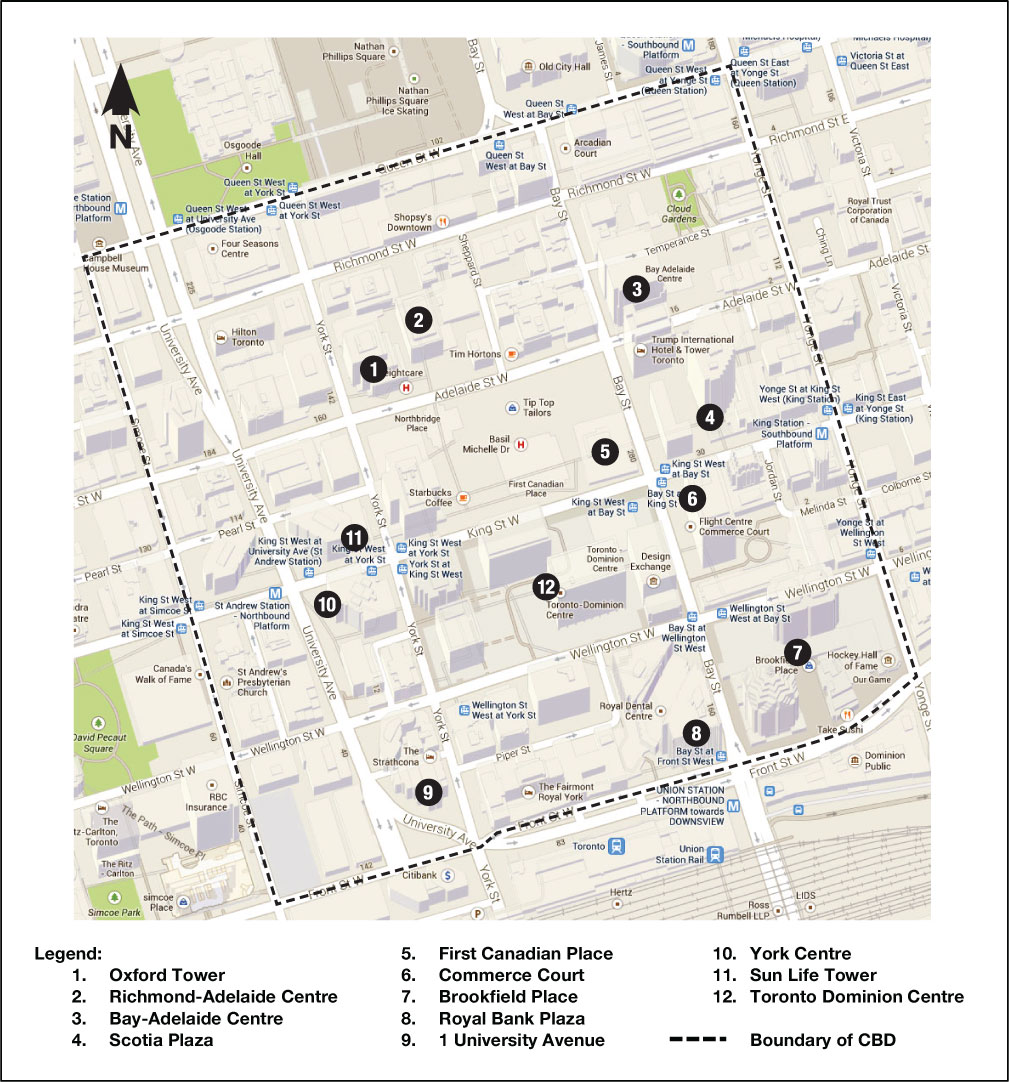
Appendix. The Central Business District (CBD) in downtown Toronto.